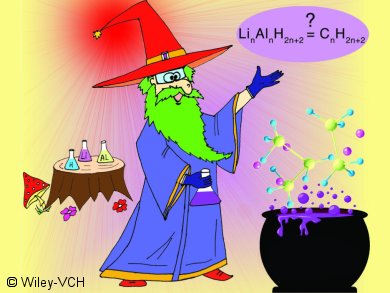Catenation is the linking of atoms of the same element through classical single bonds producing chain-like structures. Carbon, of course, is the most well-known element that can undergo catenation, but such behavior is by no means limited to carbon, silicon, boron, gallium, and indium, have also been shown to undergo homocatenation. The group of Alexander Bolydrev, Utah State University, Logan, UT, USA, have predicted that formation of homocatenated aluminum compounds, stabilized by lithium, should be possible.
By means of ab initio calculations they were able to show that aluminium should be able to homocatenate through electronic transmutation. From chemical bonding analysis they have found many striking similarities of the aluminium–hydrogen core of Li2Al2H6 and ethane as well as that of Li3Al3H8 and propane. They believe that such alkane-like cluster in aluminum hydride materials would find application in the fields of hydrogen storage and as reducing agents.
The team hopes that this work will broaden the field of aluminum chemistry and that such compounds will actually be prepared in the near future.
- Homocatenation of Aluminum: Alkane-like Structures of Li2Al2H6 and Li3Al3H8,
J. Tyler Gish, Ivan A. Popov, Alexander I. Boldyrev,
Chem. Eur. J. 2015.
DOI: 10.1002/chem.201500298
If you are interested in finding out about how the Bolydrev group have been using ab initio calculations in the search for new materials, see the poster PHYS 448 by Ivan Popov at the Physical Chemistry Poster Session at the 249th ACS National Meeting & Exposition in Denver in Hall C Colorado Convention Center on Wednesday March 25, 6:30–9:30pm.
- More on the 249th ACS Meeting




